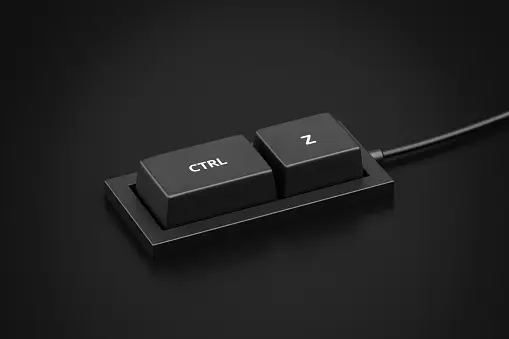
Mastering the Art of Undo: Keyboard Shortcuts for Effortless Reversals
In our digital age, the keyboard has become an extension of our hands, enabling us to navigate through various applications and programs with ease. As we embark on this journey of efficiency, it’s crucial to understand and utilize one of the most powerful functions at our fingertips: the “Undo” command. In this article, we will explore the art of undoing on the keyboard and delve into the essential shortcuts that can save us from potential mishaps and frustrations.
The Power of Undo
Undoing actions is a lifesaver when it comes to rectifying errors made during typing, editing, or formatting. Whether it’s an accidental deletion, an unintended formatting change, or a regrettable command execution, the Undo function acts as a time machine, swiftly transporting us back to a previous state of our work, saving us from having to redo our actions from scratch.
Keyboard Shortcuts for Undo
Mastering the keyboard shortcuts for undoing commands can significantly enhance our productivity. Here are the most common keyboard shortcuts used across different platforms and applications:
Windows:
Ctrl + Z: This universally recognized shortcut undoes the last action performed. Pressing it repeatedly will continue to undo actions in reverse chronological order.
Mac:
Command + Z: Mac users can achieve the same result as Ctrl + Z by using this command. Similarly, it can be pressed multiple times to undo multiple actions.
Microsoft Office:
Ctrl + Z (Windows) or Command + Z (Mac): These shortcuts work seamlessly in most Microsoft Office applications, including Word, Excel, and PowerPoint. They allow you to undo the most recent action.
Google Docs:
Ctrl + Z (Windows) or Command + Z (Mac): Just like in Microsoft Office, Google Docs utilizes the standard undo shortcut to revert the most recent action.
Adobe Creative Cloud:
Ctrl + Z (Windows) or Command + Z (Mac): Adobe software applications, such as Photoshop, Illustrator, and Premiere Pro, follow the industry norm by adopting the standard undo command for reverting the last action.

Going Beyond the Basics
While the standard undo shortcut is essential, some applications offer additional undo options to cater to specific needs. For example:
Photoshop:
Step Backward: Alt + Ctrl + Z (Windows) or Option + Command + Z (Mac): This powerful command allows you to step backward through multiple actions, giving you more control over your editing process.
Visual Studio Code:
Undo Last Cursor Operation: Ctrl + U (Windows/Mac): This shortcut is particularly useful for developers using Visual Studio Code, as it undoes the last cursor movement or operation, allowing for easy navigation within the code.
Undo Redo Balance
Remember that the undo command is often accompanied by its counterpart, the redo command, which allows you to restore actions that you have undone. The most common redo shortcuts include Ctrl + Y (Windows) or Command + Y (Mac) or even Shift + Ctrl + Z (Windows) or Shift + Command + Z (Mac).
Customizing Keyboard Shortcuts
Many applications and operating systems provide options to customize keyboard shortcuts according to your preferences. By exploring these settings, you can tailor the undo command to a combination that feels most intuitive to you.

Conclusion
The undo command is an invaluable feature that can save us from numerous typing and editing errors, offering a safety net in our digital endeavors. By mastering the art of undoing on the keyboard and familiarizing ourselves with the essential shortcuts, we can navigate through various applications with ease, improving our productivity and minimizing frustration along the way. So, embrace the power of undo and let your keyboard become a gateway to undoing your digital mishaps effortlessly!